
Computers and viruses have a traditionally rocky relationship, but that hasn’t stopped technology from joining the front lines of the fight against the pandemic. China, as ground zero for the recent COVID-19 outbreak, has been experimenting with everything from disinfection drones to cameras that can tell if you’re wearing a mask or not, companies and schools worldwide are going remote, AI is predicting outbreaks, robots are working in hospitals, and there are apps to help you avoid risky areas and even tell you where masks are in stock. Most of these systems aren’t mature enough yet to have a major impact on the situation, but COVID-19 is helping us stock our technological toolkit with all kinds of fun stuff for future outbreaks.
Drones and robots
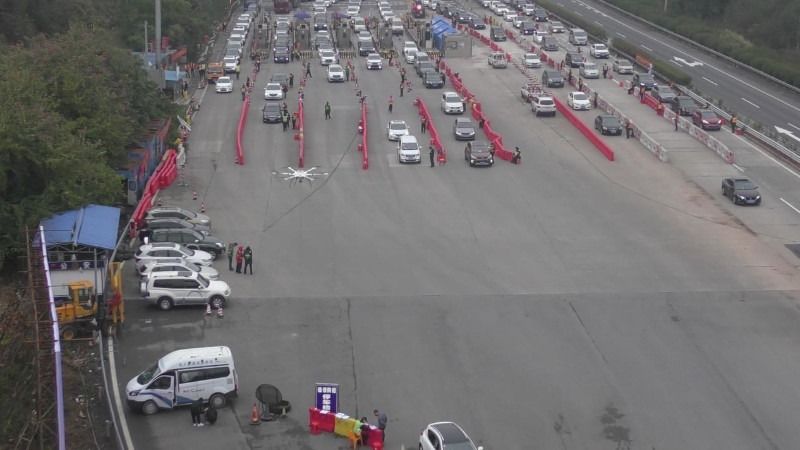
Sure, you’ve heard about the drones that can deliver blood and medicine, but what about drones that check to see if you’re wearing a mask and start lecturing you if you’re not?
That’s a real thing that several cities in China are doing, with operators flying drones around to enforce mask compliance and break up public gatherings. Companies like DJI and MicroMultiCopter have reported that their drones are being used for a wide range of social control measures aimed at virus prevention, which might have seemed creepy before this whole virus thing, but hey – it’s a state of emergency, right?
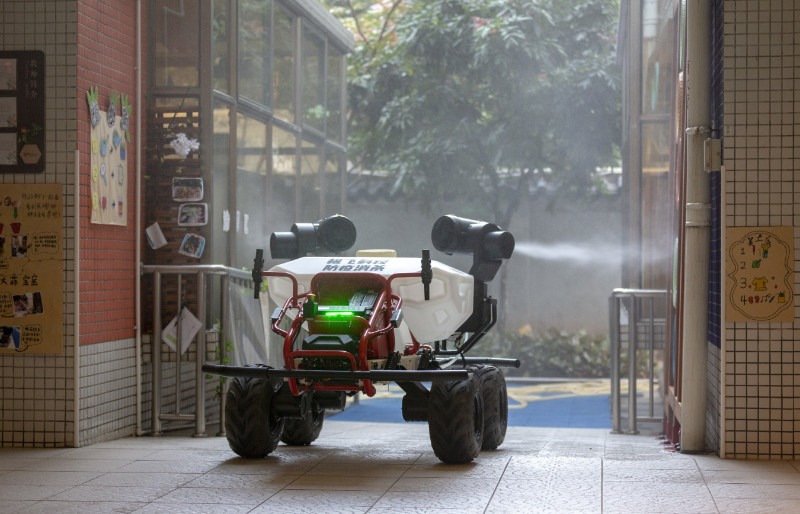
Drones are also being used to spray disinfectant in various public places, collect thermal images of people to detect elevated temperatures, make public announcements, and distribute medical supplies as needed. XAG, a company that specializes primarily in agricultural drones, has deployed ground-based robots and flying drones to disinfect in hospitals, schools, and other buildings and public spaces around China. One or two communities have even deployed drones with thermal sensors to take peoples’ temperatures while they stand at their windows.
Then there are the hospital robots: these medical assistants are disinfecting rooms with UV light, delivering food to patients in quarantine, carrying medical supplies and samples from place to place, and even allowing doctors to interact with patients remotely to avoid exposure to the disease. One hospital in Wuhan has even opened an automated ward for patients with mild symptoms, where basic tasks like delivering food, cleaning, and dispensing medication are completely roboticized.
Artificial intelligence and big data
Eyes in the sky judging your hygiene and spraying down schools are a fun image, but these sorts of technologies probably aren’t ready to be deployed at a large enough scale to actually be effective. BlueDot’s artificial intelligence, though, beat both the WHO and the CDC to figuring out that 2019-nCov was about to become a big problem, alerting clients days before either organization issued a statement.
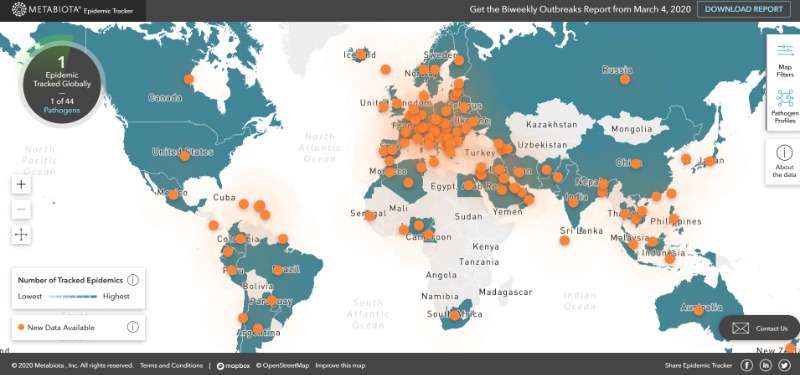
BlueDot and its competitor, MetaBiota, both use natural language processing and machine learning to sort through online content from a variety of sources and languages every day, looking for significant trends. Combined with other data, like flight paths and travel itineraries, these tools can do a lot to predict outbreaks and spreading patterns. If you’re interested, you can check out MetaBiota’s publically available outbreak map for COVID-19 and other diseases.
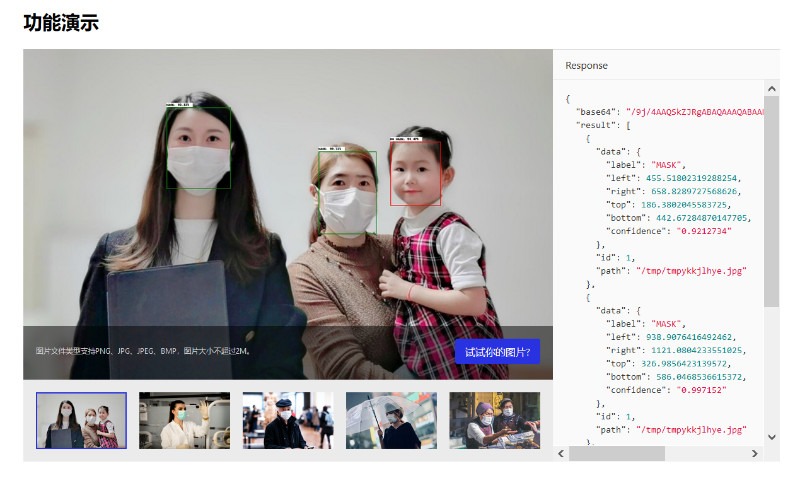
China’s AI-powered surveillance network is also getting an upgrade thanks to the virus, with companies like SenseTime and Sunell upgrading their cameras to support facial recognition even if the subject is wearing a mask. And, of course, there’s software that can accurately say whether or not someone is wearing a mask – Baidu has actually open-sourced their model – so it seems like just a matter of time until drones and cameras start automatically chiding people for failing to meet safety standards, if they’re not already.
Viral apps
Want to know if you’ve come into contact with the coronavirus? Thanks to China’s constant tracking of its residents, a lot of people in the country can actually use an app that compares their movements with those of the infected and lets them know if they’ve been in the same location. South Korea has a similar app, except it relies on limited government-provided data, making it somewhat less precise but also a lot less creepy. If you’re supposed to be in self-quarantine, though, the government will use an app to track your phone and catch you if you leave the area.
There are other apps out there with various tracking capabilities, but Apple has banned any app not from a medical source, and the Play Store has disabled all searches for “coronavirus” and “COVID-19,” as some apps were discovered to be providing inaccurate information and capitalizing on the panic. This policy may change later, but for now, you should stick to a reputable source, like this live-updating map provided by Johns Hopkins.
Work, school, and medicine are going remote
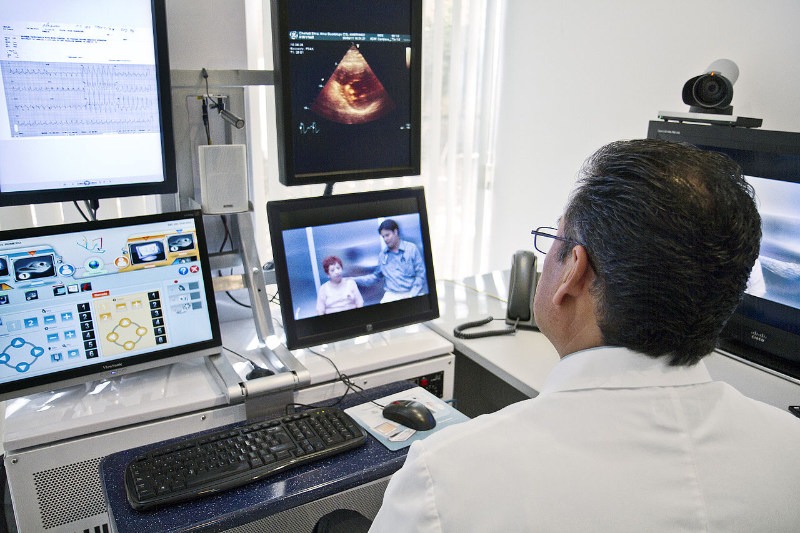
If you’ve been trying to convince your boss to let you work from home a few days a week, COVID-19 and/or other pandemics may have a silver lining. Workplaces and schools across the world are turning to online conferencing and classroom tools to help minimize contact and possible contagion. Shares of companies like Zoom went up as the rest of the stock market took a tumble in February/March 2020, and Chinese apps like AliBaba’s DingTalk and WeChat Work have skyrocketed in popularity in China. Companies like AirBnB, Google, Bloomberg, and others are all asking people to work from home, and if it goes well, who knows? This might push us into the remote work future we’ve been talking about.
Telemedicine is also becoming a popular way to screen potential Covid-19 cases without exposing healthcare workers and other patients. It’s not yet possible to confirm with remote testing, but in the future, in theory, test kits could be delivered, self-administered with direction from a healthcare worker, and picked up for analysis. In the future, drones could even act as remote healthcare assistants, distributing supplies and helping physicians do basic procedures from a distance. Wearable devices might also play a role – even data from something like a FitBit could help diagnose a viral infection.
The future of epidemics and tech
There are all kinds of ways that tech might help us manage outbreaks in the future: better predictions with AI, cashless transactions so money doesn’t transmit germs, wearable health monitors, virtual reality commuting, drones that take your temperature and tell you what to do – you name it, someone’s probably thinking about it.
Accurate information may be one of the most powerful tools, however, knowing how the disease spreads and what to do to avoid it. Potentially-hazardous places are hugely important during epidemic and pandemic events. There’s still plenty of misinformation out there, though. Fake news, rumors, and even email scams are spreading along with the virus, so checking before you hit “share” is a good way to do your part in helping mitigate any global crisis. And putting in a work-from-home request might not be a bad idea either.
Image credits: XAG Robot Joins Drone Fleet, MMC’s drones used in the battle against the new coronavirus outbreak, Telemedicine Consult, PaddleHub








